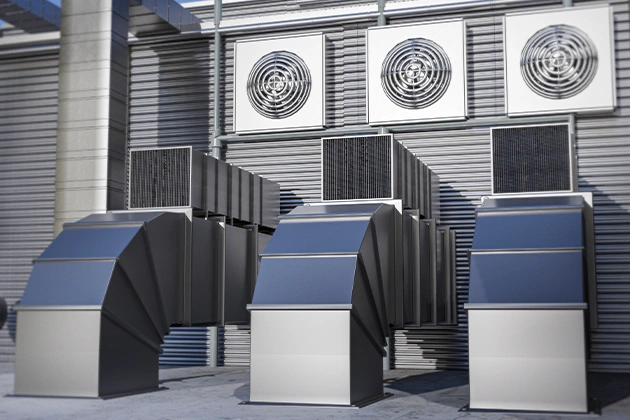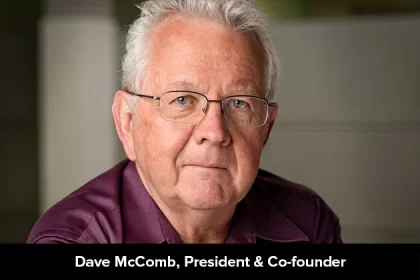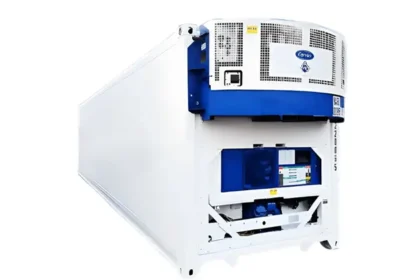There are several benefits to renting temporary HVAC equipment or Air handler rental for building projects that are too great to ignore. In order to distribute the conditioned air throughout the building and return it to the AHU, air handlers typically link to a ductwork ventilation system. In addition, they occasionally bring in fresh air and exhaust air to the atmosphere. AHUs can occasionally supply and return air directly to and from the space they serve without the need for ductwork.
Simple terminal units, also known as blower coils or fan coil units, are small air handlers for local use that may only have an air filter, coil, and blower. A makeup air unit (MAU) or fresh air handling unit (FAHU) is a bigger air handler that conditions only outside air—no recirculated air. Packaged unit (PU), heating and air conditioning unit (HCU), or rooftop unit (RTU) are terms used to describe air handlers intended for outdoor use, usually on roofs.
Some Benefits
Economical for Temporary Use
A large capital investment is needed to buy an air handler, so it might not be the best option for urgent requirements. By letting you pay only for the time you use the equipment, renting provides a much more cost-effective option.
No responsibility for upkeep or storage
Owning an air handler requires handling ongoing maintenance, repairs, and off-season storage. When renting equipment, the equipment supplier usually takes responsibility.
Short-Term HVAC Rentals
One major benefit of temporary HVAC rental systems is their ability to be installed quickly. These systems can be quickly put into place, guaranteeing that construction activities continue with the least amount of interruption. During crucial construction stages, when every second matters, this efficiency is vital. Managers can avoid expensive delays and meet deadlines by efficiently reducing downtime. According to study, for instance, teams may retain productivity and fulfill deadlines by using temporary temperature control systems to cut downtime by up to 30%. Additionally, rental units’ adaptability enables customization to meet particular project requirements, which boosts operational effectiveness even more.
In large-scale building projects, the efficiency of air management often determines how well comfort and productivity are maintained throughout the worksite. Partnering with HVAC specialists who prioritize responsive service and precision air control, such as Go Airflow, can help teams prevent temperature fluctuations that affect sensitive materials and on-site performance. With the right system configuration and proactive monitoring, temporary climate control becomes not just a support feature, but an integral part of maintaining workflow consistency and overall project quality.
Numerous choices
To accommodate the various requirements of various events and functions, Active Air provides a wide range of portable air conditioners. Split air conditioners, portable air conditioners, and units with different kilowatt capacities are all part of our selection. No matter the size or scope of the event, this selection guarantees that you will find the ideal solution for both indoor and outdoor settings.
Maintaining equilibrium
Fans that are not balanced vibrate and wobble. This can be a serious issue for home air conditioning fans: noise levels rise, efficiency is lowered, and air circulation at the vents is significantly decreased (because wobble wastes energy). The longevity of the bearings, which are connected to the fan and shaft, is also a significant issue with fans that are not balanced. Failure may result from this well before the bearings’ expected lifespan.
To ensure a smooth spin, weights can be positioned carefully; for a ceiling fan, this usually involves trial and error placement. Large fans, such as those for central air conditioning units or homes, are usually brought to stores that have specialized balancers for more complex balancing (trial and error can cause damage before the correct points are found).
Conclusion
A lot of duties and responsibilities must be balanced when planning an event. The ultimate objective of any event is to provide your visitors an experience they won’t soon forget. An air handler’s blowers can produce a lot of vibration, which the building’s occupants would be exposed to due to the duct system’s wide area. In order to prevent this, flexible sections known as vibration isolators are typically placed into the duct just before and after the air handler, as well as frequently in between the fan compartment and the remainder of the AHU. These sections’ rubberized canvas-like material permits vibration of the air handler’s components without transferring that motion to the ducts that are attached.










